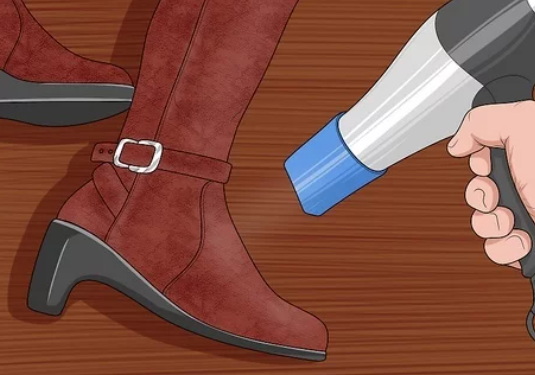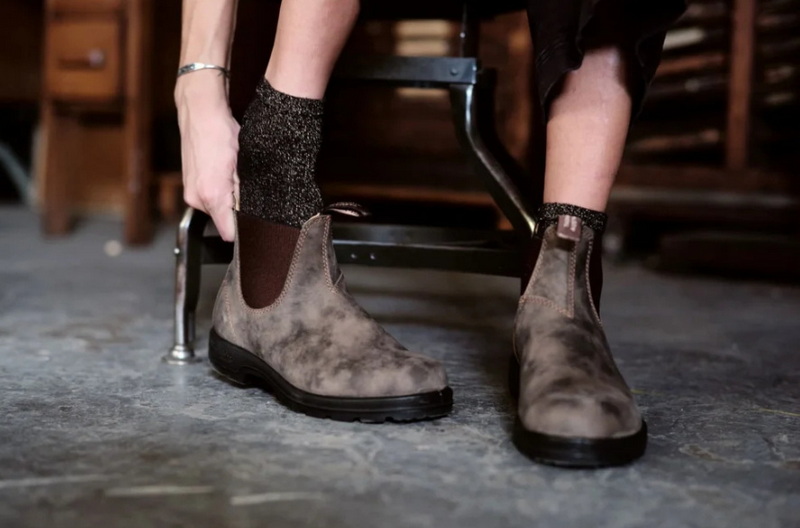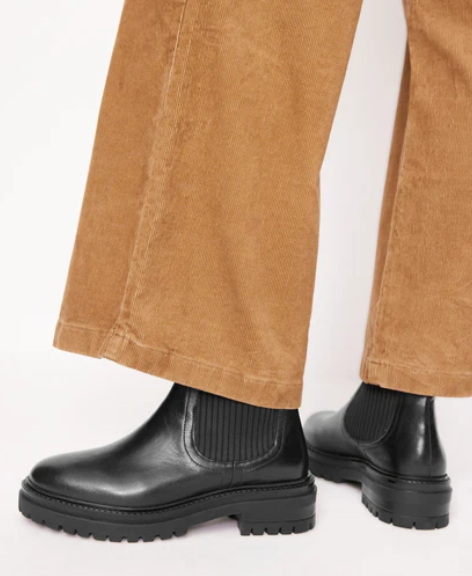Content Menu
● Understanding Leather Creasing
● Factors Affecting Creasing in Chelsea Boots
>> 1. Leather Quality
>> 2. Fit
>> 3. Construction
>> 4. Wear and Care
● Preventing and Minimizing Creases
>> 1. Use Shoe Trees
>> 2. Proper Sizing
>> 3. Rotate Your Boots
>> 4. Condition Regularly
>> 5. Use a Leather Protector
● Dealing with Existing Creases
>> 1. The Alcohol and Water Method
>> 2. Steam Treatment
>> 3. Professional Repair
● Embracing the Character
● Conclusion
● FAQ
>> 1. Are creases in Chelsea boots a sign of poor quality?
>> 2. Can I iron out creases in my Chelsea boots?
>> 3. How often should I condition my Chelsea boots to prevent creasing?
>> 4. Are some types of leather more resistant to creasing than others?
>> 5. Can wearing Chelsea boots in wet conditions increase creasing?
● Citations:
Chelsea boots are a timeless and versatile footwear option that has been popular for decades. However, like all leather shoes, they are prone to creasing over time. This article will explore the topic of creasing in Chelsea boots, discussing why it happens, how to prevent it, and whether it's a cause for concern.

Understanding Leather Creasing
Leather shoe creasing is a natural occurrence that happens when you wear and walk in your boots[1]. As you move, your feet bend, causing the leather to flex and compress. This repeated flexing creates creases in the material, particularly in areas where the foot bends the most, such as the vamp (the part of the shoe that covers the top of the foot).
While some degree of creasing is inevitable and even desirable as it shows the boots are being worn and developing character, excessive or premature creasing can be a sign of poor fit or quality.
Factors Affecting Creasing in Chelsea Boots
Several factors can influence the extent and rate of creasing in Chelsea boots:
1. Leather Quality
The quality of the leather used in the boots plays a significant role in how they crease. Higher-quality, full-grain leather tends to be more resistant to creasing and develops a more attractive patina over time[5]. In contrast, lower-quality or corrected-grain leather may crease more easily and look less appealing as it ages.
2. Fit
Proper fit is crucial in minimizing excessive creasing. Boots that are too large will have extra material that can fold and crease more easily[4]. Conversely, boots that are too tight may crease unnaturally as your foot struggles to move within the confined space.
3. Construction
The way the boots are constructed can affect creasing. Chelsea boots with a one-piece vamp (the part covering the top of the foot) may be more prone to visible creasing than those with separate pieces or a cap toe design[3].
4. Wear and Care
How you wear and care for your boots can significantly impact creasing. Frequent wear without allowing the boots to rest and dry out between uses can lead to more pronounced creasing[5].
Preventing and Minimizing Creases
While it's impossible to completely prevent creasing in Chelsea boots, there are several steps you can take to minimize it:
1. Use Shoe Trees
Investing in a good pair of cedar shoe trees is one of the most effective ways to maintain the shape of your boots and reduce creasing[6]. Insert the shoe trees as soon as you take off your boots to help them retain their shape and absorb moisture.
2. Proper Sizing
Ensure your Chelsea boots fit correctly. They should be snug but not tight, with enough room for your toes to move comfortably[4]. If necessary, use insoles or heel grips to improve the fit.
3. Rotate Your Boots
Avoid wearing the same pair of boots every day. Rotating between multiple pairs allows each pair to rest and dry out between wears, which can help reduce creasing[5].
4. Condition Regularly
Keep the leather supple and moisturized by regularly conditioning your boots. This helps the leather resist creasing and prolongs the life of your footwear[7].
5. Use a Leather Protector
Apply a leather protector spray to your boots to guard against water damage, which can exacerbate creasing[7].

Dealing with Existing Creases
If your Chelsea boots have already developed noticeable creases, there are a few methods you can try to reduce their appearance:
1. The Alcohol and Water Method
Mix equal parts rubbing alcohol and water, then apply the solution to the creased area using a cloth. Gently massage the leather against the direction of the crease, then stuff the boots with paper or shoe trees and let them dry overnight[4].
2. Steam Treatment
Use a garment steamer to apply steam to the creased area, then stuff the boots and let them dry. Be cautious with this method, as excessive heat or moisture can damage the leather.
3. Professional Repair
For severe creasing or valuable boots, consider taking them to a professional cobbler who can use specialized techniques to reduce creasing and restore the shape of the boots.
Embracing the Character
It's important to remember that some degree of creasing is not only normal but can also add character to your Chelsea boots. Many leather enthusiasts appreciate the unique patina and wear patterns that develop over time, seeing them as a reflection of the boots' journey and the wearer's lifestyle.
Conclusion
While Chelsea boots, like all leather footwear, will inevitably crease with wear, understanding the causes and taking preventive measures can help maintain their appearance and longevity. By choosing quality boots, ensuring a proper fit, and implementing good care practices, you can minimize excessive creasing and enjoy your Chelsea boots for years to come.

FAQ
1. Are creases in Chelsea boots a sign of poor quality?
Not necessarily. Some degree of creasing is normal in all leather shoes. However, excessive or premature creasing can indicate poor fit or lower-quality leather[1].
2. Can I iron out creases in my Chelsea boots?
It's not recommended to iron leather boots directly. If you want to use heat to remove creases, a safer method is to use a garment steamer, being careful not to oversaturate the leather[4].
3. How often should I condition my Chelsea boots to prevent creasing?
The frequency of conditioning depends on how often you wear your boots and the conditions they're exposed to. As a general rule, conditioning every 2-3 months is a good starting point for regularly worn boots[7].
4. Are some types of leather more resistant to creasing than others?
Yes, some leathers are more resistant to creasing. For example, shell cordovan is known for its ability to roll rather than crease sharply. Full-grain leather also tends to be more resistant to creasing compared to corrected-grain or lower-quality leathers[5].
5. Can wearing Chelsea boots in wet conditions increase creasing?
Yes, exposure to water can soften the leather and make it more prone to creasing. Always allow wet boots to dry naturally with shoe trees inserted, and consider using a waterproofing spray to protect your boots from moisture[7].
Citations:
[1] https://samuelhubbard.com/blogs/journal/leather-shoe-creasing
[2] https://www.aquila.com.au/style-guide/how-to-care-for-leather-boots
[3] https://blog.wordvice.cn/title-capitalization-rules-for-research-papers/
[4] https://stridewise.com/how-to-stop-leather-shoes-creasing/
[5] https://bakershoe.com/blogs/news/the-complete-leather-boot-care-guide
[6] https://www.youtube.com/watch?v=bgDiGWxEQvs
[7] https://www.harpersbazaar.com/fashion/trends/a4413/how-to-take-care-of-leather-and-suede-boots/
[8] https://www.reddit.com/r/AskACobbler/comments/1gignzy/is_this_amount_of_creasing_normal_for_a_new_pair/

















